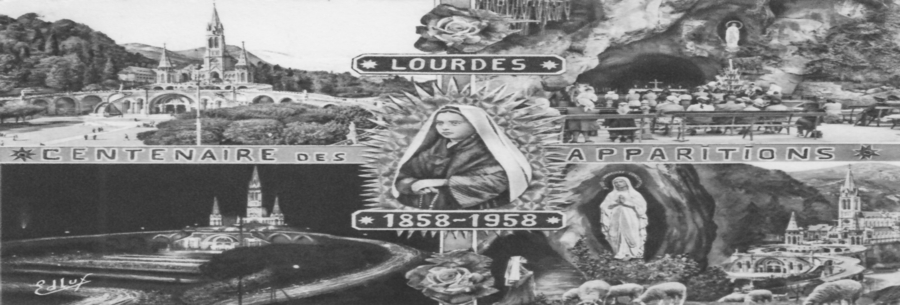The Marian apparitions at Lourdes in 1858 are among the most famous and studied in the history of Catholicism. They took place in Lourdes, a small town in the French Pyrenees, where a young girl named Bernadette Soubirous claimed to have seen visions of the Virgin Mary on eighteen occasions between 11 February and 16 July 1858.
Bernadette Soubirous, aged fourteen at the time, lived in a poor family in Lourdes. On 11 February 1858, while foraging for wood with her sister and a friend near the River Gave, Bernadette saw a vision of what she described as a "lady" in a rocky grotto called Massabielle. The vision was repeated several times over the next few weeks, and Bernadette reported that the Lady would ask her to return to the grotto for fifteen days in a row.
During the apparitions, the Lady would appear wearing a white veil, a blue sash and a golden rose on each foot. She appeared with a gentle expression and a benevolent gaze, and she invited Bernadette to pray for the conversion of sinners and to do penance for their sins and those of the world.
Over the next few weeks, thousands of people came to the grotto to see the apparitions. Bernadette was subjected to rigorous questioning by the civil and religious authorities, but she remained firm in her accounts of the apparitions, affirming that the Lady was indeed the Virgin Mary.
During the apparitions, several extraordinary phenomena were reported, such as miraculous cures and manifestations of light and perfume around the grotto. These events aroused great interest and controversy, attracting attention throughout France and beyond.
During the sixteenth apparition, the Lady revealed her identity to Bernadette, saying "I am the Immaculate Conception", thus confirming the dogma of the Immaculate Conception proclaimed a few years earlier by the Catholic Church. This statement strengthened the credibility of the apparitions and had a significant impact on Marian devotion throughout the world.
After the apparitions, the grotto at Massabielle became a major pilgrimage site, attracting millions of faithful every year. Many miracles were attributed to the Virgin Mary's intercession at Lourdes, and thousands of people came to seek comfort, healing and spiritual conversion at the grotto.
The Catholic Church recognised the authenticity of the Lourdes apparitions in 1862, after a thorough investigation. Since then, Lourdes has become one of the most important Marian pilgrimage sites in the world, attracting millions of faithful of all nationalities and faiths every year.
The Lourdes apparitions have left an enduring legacy of faith, devotion and conversion. They continue to inspire millions of people around the world to seek the presence and intercession of the Virgin Mary in their lives, and to turn to God with trust and hope.




















